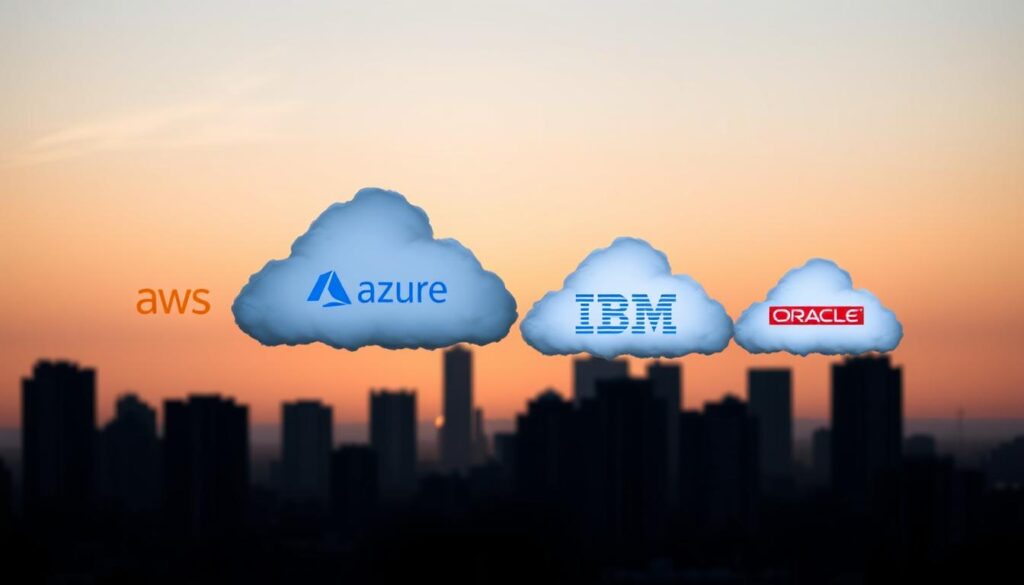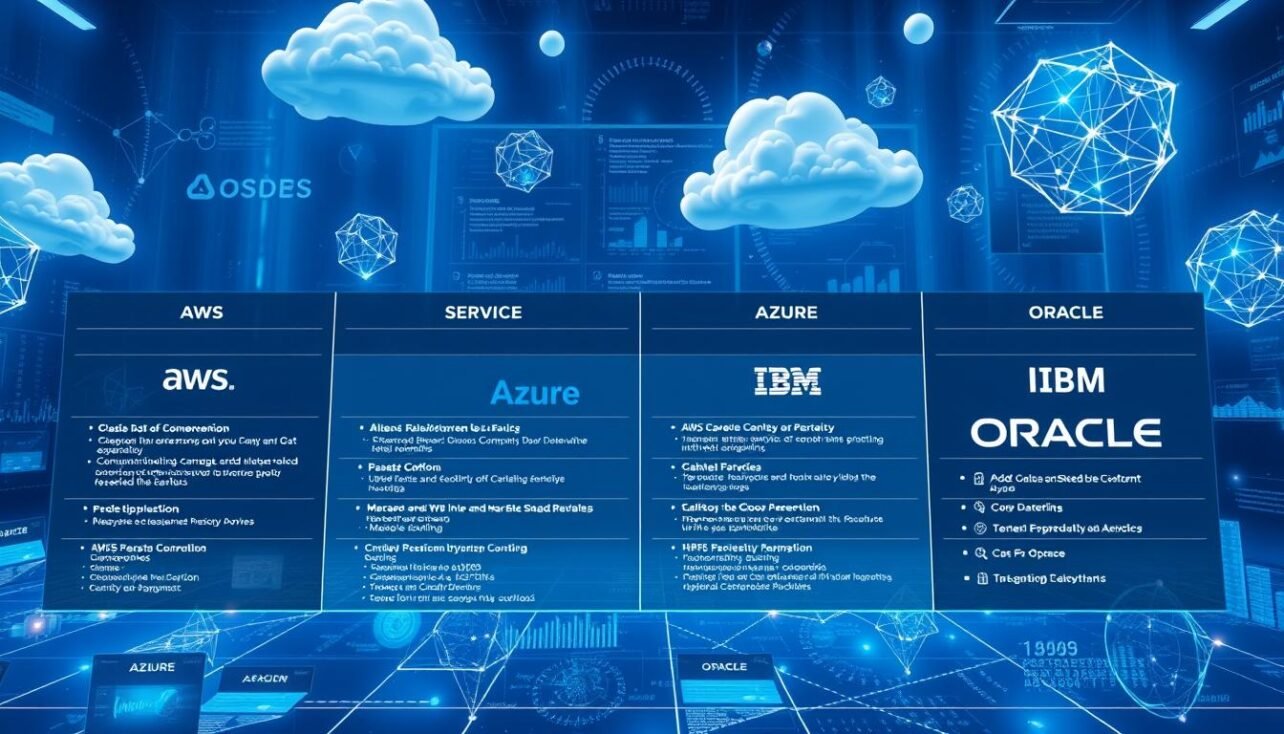Businesses exploring distributed ledger technology now have access to managed cloud solutions that simplify deployment. Leading providers offer tools to build secure networks without heavy infrastructure investments. This analysis focuses on four major options, highlighting their operational strengths for diverse organizational needs.
Scalability remains a critical factor for enterprises adopting these systems. Some solutions prioritize rapid integration with existing workflows, while others emphasize custom protocol support. Cost structures also vary significantly, with pay-as-you-go models appealing to startups and premium tiers catering to multinational corporations.
Security frameworks differ across providers, ranging from basic access controls to military-grade encryption. A detailed breakdown of technical specifications reveals how each platform handles data protection and compliance requirements. Development teams should assess native analytics tools and API compatibility when choosing their ecosystem.
Implementation scenarios demonstrate practical applications across industries. Healthcare networks benefit from audit-friendly architectures, while supply chain operators leverage real-time tracking features. The right choice depends on balancing technical requirements with long-term digital transformation goals.
Key Takeaways
- Major cloud providers offer distinct approaches to distributed ledger implementation
- Scalability and integration capabilities vary by solution type
- Security protocols range from basic to enterprise-grade protections
- Pricing models align with different organizational sizes and needs
- Protocol support influences development flexibility
- Real-world applications highlight industry-specific advantages
Exploring the Role of Cloud Computing in Blockchain Platforms
Modern enterprises increasingly rely on internet-based systems to streamline operations. The shift from physical servers to virtual environments has reshaped how companies manage resources and collaborate globally.
The Evolution of Cloud Services for Modern Businesses
Traditional IT infrastructure required massive upfront investments. Today’s cloud services eliminate hardware costs while offering instant scalability. This transition allows teams to focus on innovation rather than maintenance.
Three key benefits define this transformation:
- Reduced operational expenses through pay-per-use models
- Instant access to cutting-edge technologies
- Global network availability across time zones
Enhancing Data Security and Scalability
Combining decentralized systems with cloud flexibility creates robust solutions for sensitive data. Distributed networks add cryptographic layers to standard protection measures, making breaches significantly harder.
| Solution Type | Data Protection | Scalability Limit |
|---|---|---|
| Traditional IT | Basic encryption | Physical hardware |
| Cloud-only | Multi-factor auth | Virtual scaling |
| Cloud + Decentralized | End-to-end encryption | Unlimited nodes |
This hybrid approach supports complex applications like supply chain tracking and digital contracts. Developers can deploy solutions faster without compromising audit trails or compliance standards.
Blockchain as a Service platforms comparison AWS Azure IBM Oracle features
Enterprise leaders seeking efficient network deployment options must weigh technical capabilities against operational needs. Four major providers deliver specialized approaches to building secure, scalable ecosystems for digital transactions.

Scalability Meets Enterprise-Grade Protection
Amazon Web Services leads with managed solutions supporting multiple ledger frameworks. Its environment integrates with existing storage systems and computing resources, allowing teams to maintain workflow continuity. Advanced threat detection and automatic encryption protocols address critical security concerns for regulated industries.
Unified Ecosystem Connectivity
Microsoft’s offering shines through native compatibility with productivity suites and server environments. Global data centers enable rapid transaction processing across regions while maintaining strict compliance standards. Multi-layered authentication systems prevent unauthorized access to sensitive financial records or supply chain data.
Specialized Tech Integrations
IBM combines ledger networks with cognitive computing tools, enabling predictive analytics for complex operations. Oracle stands apart with self-managing database systems that streamline deployment processes. Both providers offer tailored solutions for organizations requiring hybrid infrastructure models or advanced automation features.
When selecting solutions, consider existing tech investments and growth projections. Market leaders each provide distinct advantages in integration depth, intelligent automation, or global network performance.
Differentiating BaaS Features and Cloud Service Innovations
Cloud service providers are pushing technological boundaries to deliver specialized tools for enterprise needs. Distinct approaches emerge when analyzing infrastructure capabilities and innovation roadmaps.

Comparative Advantages and Key Security Features
Oracle’s ecosystem stands out with proprietary database solutions. Its Autonomous Database and Exadata Cloud Service optimize performance for data-heavy workloads. Unique Azure Interconnect technology enables cost-efficient hybrid setups across regions.
Google’s strength lies in blending machine learning with ledger networks. Developers gain tools for predictive analytics and automated pattern recognition. This integration creates smart workflows for supply chain and financial systems.
Security protocols vary across providers. Some leverage AI-driven threat detection, while others prioritize hardware-based encryption. Multi-layered access controls and real-time monitoring have become standard for sensitive operations.
Performance Metrics and Global Reach
Geographic distribution impacts deployment strategies. While some providers prioritize regional performance hubs, others focus on worldwide coverage. Transaction speeds differ based on node locations and network architecture.
Database optimization remains critical for enterprises handling complex transactions. Specialized environments reduce latency during peak loads. Emerging solutions combine scalability with energy-efficient operations to meet sustainability goals.
Innovation trends reveal diverging priorities. Autonomous operations and AI integration compete with ecosystem expansion strategies. Decision-makers must align these technical capabilities with long-term digital transformation plans.
Closing Insights on Selecting the Ideal BaaS Platform
Decision-makers must evaluate multiple technical and operational factors when choosing distributed ledger solutions. Alignment between organizational objectives and a provider’s capabilities determines implementation success. Hidden costs like data migration fees and transaction charges often influence long-term viability more than initial pricing models.
Integration ease with current cloud services proves critical for minimizing workflow disruptions. Teams should prioritize ecosystems offering pre-built connectors for common enterprise tools. A recent study on integrated systems highlights improved efficiency when combining distributed networks with existing cloud resources.
Security evaluations must extend beyond basic encryption. Look for providers with industry-specific compliance certifications and real-time monitoring tools. Support quality directly impacts deployment timelines – comprehensive documentation and responsive teams reduce learning curves for new adopters.
Flexibility remains paramount as needs evolve. Opt for solutions allowing data portability between environments while avoiding restrictive vendor agreements. The optimal choice balances technical specs with sustainable growth potential for business-critical applications across hybrid infrastructures.


No comments yet